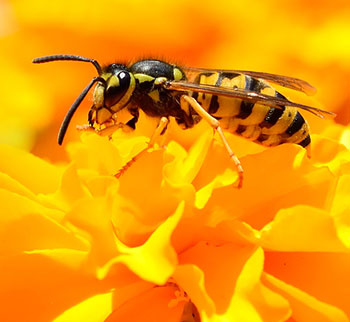In the animal kingdom, finding a mate can be an arduous task involving elaborate courtship displays or combat. But for some male parasitoid wasps, finding multiple mates in a matter of seconds is as easy as flicking an antenna.
Using cinematography cameras designed to record fast-moving objects, a team of biologists at Simon Fraser University (SFU), in Burnaby, B.C., has discovered that the wasps exhibit two mating strategies: a mate-at-once (MAO) tactic and a harem-gathering-and-guarding (HGG) approach.
The footage shows that the MAO male mates with the first female he encounters. The HGG male, however, approaches a female and, once in range, uses the tip of his antennae to tap her antennae.
Kelly Ablard, the team’s lead researcher, suggests that this action transmits an unidentified, specimen-specific pheromone onto the female’s antennae. That pheromone marks the female as off-limits to other male wasps and helps the male relocate the female when he’s ready to mate. “Males of many species employ competitive strategies resulting in an MAO tactic,” says Ablard, “but to my knowledge, no other species uses the approach whereby a male gathers and guards a harem of virgins to mate with later by using an individually unique pheromone.”
According to Ablard, HGG males also encounter females — which only mate once during their four- to six-week lifespan — twice as fast as do MAO males, which allows the former to tag multiple females in a matter of seconds for later mating.
Although all male parasitoid wasps can produce the pheromone that enables them to tag and detect females, no MAO males were observed switching to the HGG method during the research. “This doesn’t mean that they can’t,” says Ablard, “but we just don’t know whether they can, given different types of competitive settings.”
Physical strength appears to be a factor. “The speed of the HGG males is an indication of their physical ability and strength, and this is seen as an advantage by the female,” says Gerhard Gries, a professor in SFU’s department of biological sciences who supervised Ablard’s research.
Despite the reproductive advantage of the HGG technique, this isn’t a survival-of- the-fittest story. “Various theoretical models would predict that these two tactics will continue to coexist, but we didn’t explore them in an evolutionary framework,” says Ablard. “It gives you an appreciation of how species that are vastly different from us are similar to us in that they accentuate their physical attributes and respond to their environment in order to make decisions which will ensure that their genes are passed on.”




